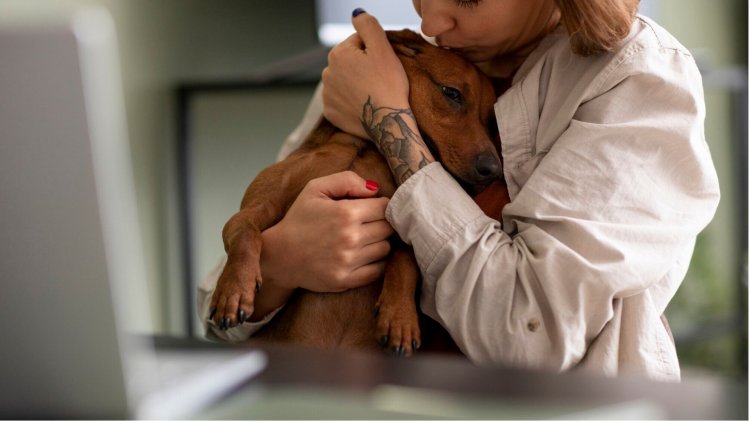Third-Party Liability Dog Cover
In today’s world, responsible dog ownership goes beyond just feeding and walking your furry friend.

In today’s world, responsible dog ownership goes beyond just feeding and walking your furry friend. It also includes understanding and managing the potential risks that come with having a dog. One crucial aspect of this responsibility is third-party liability insurance. This type of coverage protects dog owners from financial losses arising from incidents where their dog causes injury or damage to others. This article explores what third-party liability dog cover is, why it’s important, what it typically includes, and how to choose the right policy for your needs.
What is Third-Party Liability Dog Cover?
Third-party liability dog cover is a specific type of insurance designed to protect dog owners from financial liability if their dog injures someone or damages property. Essentially, it covers legal and compensation costs that may arise if your dog is deemed responsible for an incident involving another party. Unlike other types of dog insurance, which may cover veterinary costs or accidents involving the dog itself, third-party liability cover focuses on the financial repercussions of the dog’s actions affecting others.
Why is Third-Party Liability Dog Cover Important?
The need for third-party liability dog cover becomes apparent when considering the potential risks associated with dog ownership. Dogs, by their very nature, can be unpredictable. Incidents such as dog bites, property damage, or even an aggressive altercation with another animal can lead to significant financial liability. Without adequate insurance, these situations can result in hefty legal fees and compensation claims that could financially strain any dog owner.
For example, consider a scenario where your dog bites a neighbor's child, causing injury. The medical costs, legal expenses, and potential compensation claims can quickly escalate. Third-party liability cover provides peace of mind by ensuring that such financial burdens are managed effectively.
What Does Third-Party Liability Dog Cover Typically Include?
Third-party liability dog cover generally includes several key components:
- Injuries to Other People: Coverage for medical expenses and compensation claims if your dog injures someone.
- Damage to Property: Compensation for repairs or replacement of property damaged by your dog.
- Legal Expenses: Coverage for legal fees incurred while defending against liability claims.
However, there are also common exclusions and limitations. For instance, certain breeds considered high-risk may not be covered, or there may be limitations on claims arising from specific types of incidents, such as dog attacks that occur while the dog is not under control. Additionally, some policies may exclude coverage for intentional harm or incidents that occur outside the geographical area of coverage.
How to Choose the Right Third-Party Liability Dog Cover
Choosing the right third-party liability dog cover requires careful consideration of several factors:
- Coverage Limits: Ensure that the policy offers sufficient coverage to handle potential claims. This includes considering both the maximum payout and any deductibles.
- Exclusions and Limitations: Review the policy’s terms to understand what is and isn’t covered. Pay close attention to any breed restrictions or specific exclusions.
- Cost: Compare premiums across different providers, but remember that the cheapest option may not always offer the best protection.
When comparing insurance providers, look for those with good customer reviews and a reputation for handling claims efficiently. A comprehensive policy with high coverage limits and few exclusions will provide better protection in the event of an incident.
How to Make a Claim on Your Third-Party Liability Dog Cover
If an incident occurs, follow these steps to make a claim:
- Immediate Actions: Ensure the safety of all parties involved and seek medical attention if necessary.
- Documentation: Gather evidence, including photographs of injuries or damage, and obtain statements from witnesses.
- Notify Your Insurer: Contact your insurance provider as soon as possible to report the incident and begin the claims process.
- Claims Process: Follow your insurer’s instructions for submitting the claim. This may include providing detailed information and documentation to support your claim.
Common Misconceptions and FAQs
Several misconceptions surround third-party liability dog cover. One common myth is that all dog insurance policies include third-party liability coverage, which is not always the case. It’s essential to verify that the policy explicitly includes this type of cover. Another FAQ often encountered is whether policies cover dog bites; typically, they do, but always confirm the specifics with your insurer.
Alternatives to Third-Party Liability Dog Cover
While third-party liability dog cover is crucial, some alternative options might also provide protection. For example, homeowners’ or renters’ insurance policies sometimes include liability coverage for pets. However, these policies may not offer the same level of protection or may have higher limits and exclusions. Comparing these alternatives with dedicated third-party liability dog cover will help you choose the best option for your needs.
Final Thoughts
Third-party liability dog cover is an essential component of responsible dog ownership. It provides financial protection and peace of mind, ensuring that you are prepared for any incidents involving your dog. By understanding what this coverage entails, how to choose the right policy, and how to manage claims, you can safeguard yourself against potential financial risks and focus on enjoying your time with your canine companion. If you haven’t already, consider reviewing your current coverage or exploring new options to ensure you’re fully protected.
What's Your Reaction?



















